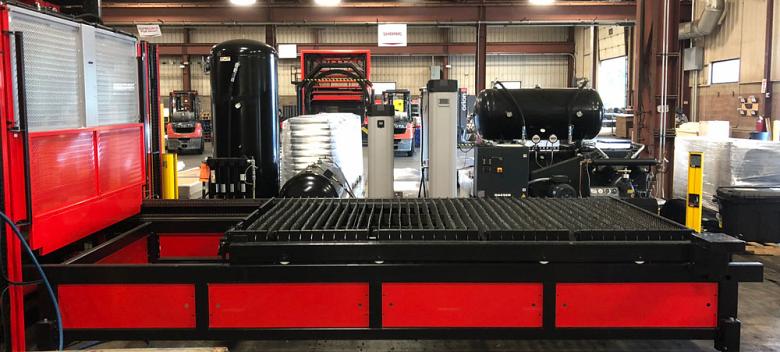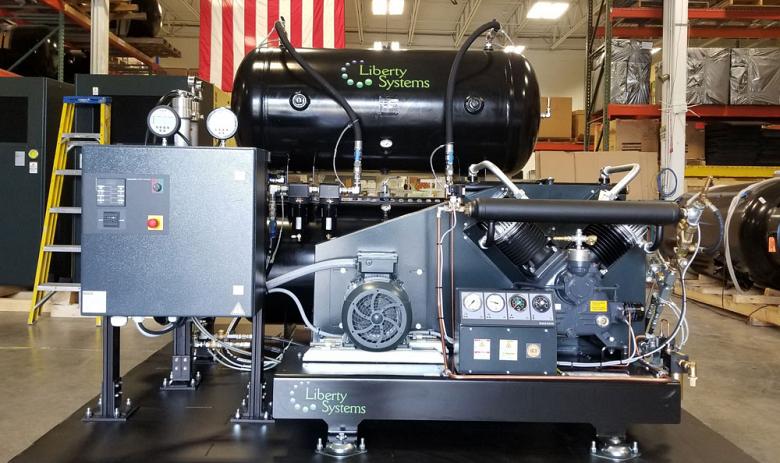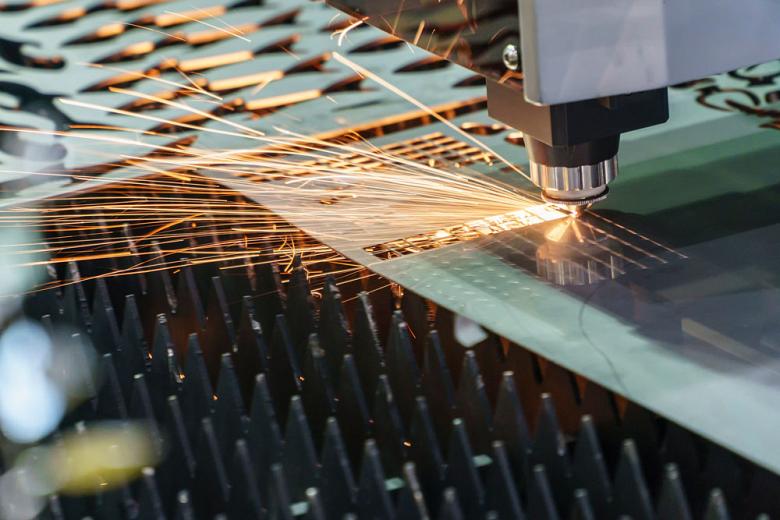When fabricators finally purchased their first fiber laser, they learned two things: They were going to cut material at increased speeds than they did with their older CO2 technology, and they were going to consume a lot more nitrogen doing it.
The latter point didn’t dominate conversations during the investigation and purchasing process for the new fiber laser, but it soon would be an area of focus. Simply put, nitrogen gas consumption can get quite expensive, and fabricators really had no alternative if they wanted to ensure the laser-cut edges on their parts would be oxide-free—the preferred surface for powder coating application and adhesion.
Necessity is the mother of invention, and with fabricators it was no different. Fabricators pushed industry to find more cost-effective alternatives to the liquid nitrogen they were contractually obligated to purchase in bulk, dewars, or even cylinders. This has led to three distinct laser gas trends that have one commonality: Fabricators are showing interest in generating their own gases.
No. 1 Trend: Nitrogen Gas Generation
Nitrogen gas generation is not really a new trend, but it’s really caught on in the last five years. The technology has evolved so that it is more reliable, which eliminates the great fear of the laser being down because of gas delivery issues.
Nitrogen is the largest component of the air we breathe. It accounts for about 78 percent of air, with oxygen (20.9 percent), argon (0.9 percent), carbon dioxide (0.03 percent), and trace elements of hydrogen, helium, neon, krypton, and xenon making up the rest.
Nitrogen generators typically rely on one of two technologies to generate pure nitrogen:
Hollow fiber membranes. In this mechanical process, gas flows through the fibers, with the oxygen permeating outward through pores in the fiber and nitrogen molecules, which can’t fit through the pores, and flowing through to the laser. Purity levels of 95 percent to 99.5 percent, which is 5,000 parts per million (PPM) oxygen, are possible with this approach. (Reaching 99.9 percent purity with flow of 2,500 standard cubic feet per hour [SCFH] is possible with this approach, but to achieve greater than 99.9 percent requires a lot of energy and might be cost-prohibitive in many applications.)
Pressure swing adsorption. This air-separation method is probably the more common way to generate nitrogen in metal fabricating environments. It relies on a carbon molecular sieve in one tank to trap the oxygen molecules, which allows the nitrogen molecules to pass through the tank vertically into another tank. When the first tank can no longer adsorb any additional oxygen, a pressure swing occurs; the second tank goes into a pressurized mode, and the first tank exhausts its oxygen collection. The first tank then is purged with nitrogen, and another separation cycle is ready to begin. Purity values of 95 percent to 99.999 percent, which has about 10 PPM of oxygen, are possible, as are flow rates up to 20,000 SCFH.
Now, while nitrogen generation has been around for years, fabricators weren’t widespread adopters for many years. Liquid nitrogen delivery was reliable, and frankly many shops were skeptical of the technology. They might have had a right to question the performance of first-generation nitrogen generators, but the last 10 or so years has seen a great improvement in the technology. Air compressors and nitrogen boosters are far more advanced and hundreds of installations have proven the generator’s reliability, particularly when they are sized correctly for a metal fabricator’s operation today and in the future.
And these aren’t just systems that are designed to run for 10 hours to build up a reserve of nitrogen for use on the day shift. The truth is that these reserve-type systems are not really suited to the realities of a job shop in which green-light time may be excessive on some days or jobs might require much higher flow or higher-pressure delivery, which consumes stored nitrogen very quickly. If the stored nitrogen is used, the system may need 10 or more inactive hours to build it back up again.

Figure 1
Today’s systems are designed to run 24 hours/seven days a week and engineered to the most demanding of scenarios (see Figure 1). Additionally, nitrogen boosters are used to assist with changes in pressurized delivery.
In many instances, the air compressor and nitrogen booster pump are sized for future expansion during the initial installation of a nitrogen-generation system. For example, if a fabricator wants to add a second laser to the same nitrogen system, requires more SCFH for processing thicker material, or is replacing an older machine with a new, high-powered fiber laser, the shop might need to go from a 3,000-SCFH system to a system twice the size. To do so, it can simply add another nitrogen generator module.
If installing an air compressor that is larger than currently needed sounds a bit wasteful, think again. The additional compressed-air capacity can be used to run a dust collector or even material handling equipment. When the time comes to use all the compressed-air capacity for fiber laser cutting with the nitrogen generator, the fabricator can buy a smaller air compressor for those other applications outside of laser cutting.
No. 2 Trend: Dry Air Assist Systems
Interest in dry air assist systems has really taken off over the past two years because they provide metal fabricators with an alternative gas-generation option when they don’t need the bright shiny cut edge provided by the nitrogen used as the laser-cut assist gas. They get the cutting performance without the additional expense (see Figure 2).

Figure 2
For example, a dry air assist system has a compressor that is about half of the size of a nitrogen-generation system’s compressor, which makes for a considerable cost savings not only in the initial investment but also in ongoing operational expenses. Meanwhile, it can have the same booster compressor as a nitrogen system, which enables it to deliver similar flow rates.
Metal fabricators might think that air containing only roughly 80 percent of nitrogen would be horrible for material that is to be welded or painted, but that’s not necessarily true. In most instances, the dry air assist systems can generate assist gases that produce weldable, paintable laser-cut edges. Paint adhesion testing and salt-spray testing have proven this out.
This is especially the case when cutting material thicker than 1/8 inch. The moisture has to come out of that compressed air stream, not only to achieve an increase in speed but to make cut edges receptive for downstream applications, such as painting. That’s one of the reasons that simple shop air shouldn’t be used for these applications: It’s too “wet.” Moving the compressed air through extensive drying media gets it in shape as a suitable laser cutting assist gas.
As companies have been proving this concept out with thicker materials, more fabricators have shown an interest in these dry air assist systems. It also should be noted that fab shops can upgrade to this type of system without affecting their existing contract with their bulk gas supplier as shops have been cutting with compressed air for years.
No. 3 Trend: Hybrid Systems
Mixing gases to achieve a certain result is nothing new in metal fabricating; welders have used different gas mixtures for different applications for years. Now the concept is catching the attention of more metal fabricators looking to get more out of their fiber lasers.
Hybrid systems that combine gases in a proprietary manner comprise a nitrogen generator, which produces nitrogen at a higher purity level than might normally be available with standard systems, and a dry air assist system. The proprietary equipment setup then mixes gases in specific ratios to deliver assist gases that improve typical fiber laser cutting performance. These hybrid systems have helped to boost laser cutting speeds of mild steel by 40 percent in certain applications and eliminate dross from laser cutting of 1-in. aluminum in others.
These systems also offer a level of flexibility—the metal fabricator can choose to either cut with just the nitrogen produced by the nitrogen generator or just the dry air produced by the dry air assist system. All the bases are covered.











